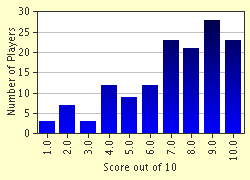Quiz Answer Key and Fun Facts
1. The title of this novel comes from a quote by Poirot early in the novel, which reminds the Reverend Stephen Lang of a quote from Scripture: "Yea, also the heart of the sons of men is full of evil, and madness is in their heart while they live." Which book of the Old Testament is the quote from?
2. To what does Poirot compare the rows of bodies lying in the sun?
3. Poirot realizes that a murder is being planned after hearing a conversation between which two people?
4. Which of the following statements is true of Christine Redfern?
5. From the start, the murderers plan to frame Linda Marshall for the murder.
6. When Poirot smells the remnant of a certain perfume in the Pixie's Cave, he realizes that one of these two women must have been in the cave recently. Who are they?
7. Poirot feels that two apparently insignificant occurences on the day of the murder are, in fact, highly significant. One is a bottle which was thrown from one of the hotel windows, narrowly missing Emily Brewster. The other is the fact that the maid at the hotel heard a bathtub emptying at noon on the day of the murder. What strikes Poirot as significant about both of these occurences?
8. Which of these characters' description of Arlena Marshall turned out to be the most accurate?
9. Towards the end of the novel, Poirot decides to invite the suspects to a picnic at Dartmoor. Ostensibly, this is to relax everyone's mind and dispel the atmosphere created by the recent murder, but in fact Poirot wants to observe everyone with his/her guard down. What important fact does he uncover during this outing?
10. What was the motive for the crime?
Source: Author
jouen58
This quiz was reviewed by FunTrivia editor
MotherGoose before going online.
Any errors found in FunTrivia content are routinely corrected through our feedback system.

